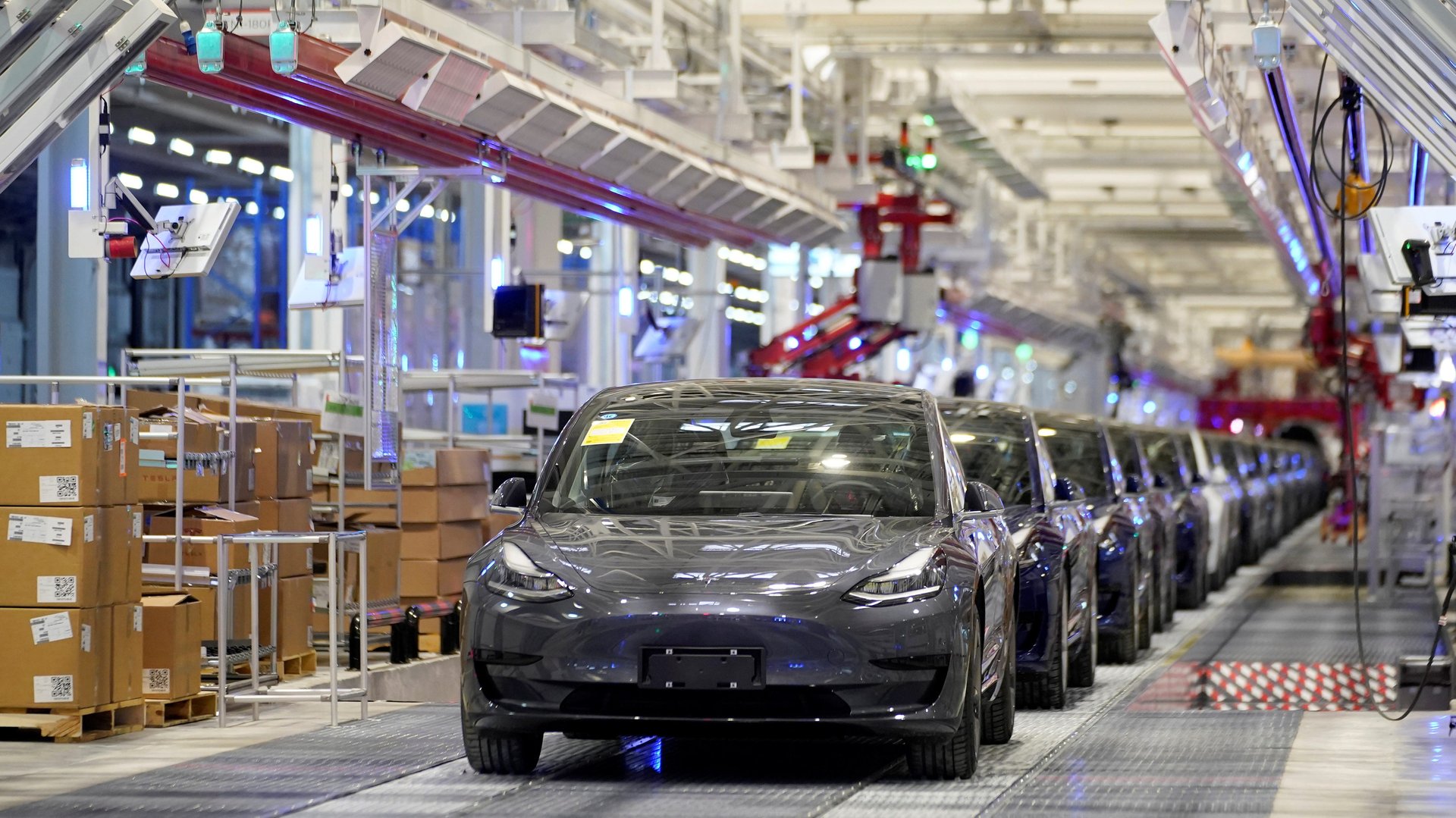Supply chain challenges finally caught up to Tesla
Tesla’s quarterly car production fell in the first quarter of 2022—the first drop since the start of the pandemic. The electric carmaker managed to triple its output during the first two years of the pandemic, despite chip shortages and historic gridlock at sea ports. But supply chain challenges have finally caught up and halted Tesla’s rapid production growth.


Tesla’s quarterly car production fell in the first quarter of 2022—the first drop since the start of the pandemic. The electric carmaker managed to triple its output during the first two years of the pandemic, despite chip shortages and historic gridlock at sea ports. But supply chain challenges have finally caught up and halted Tesla’s rapid production growth.
Tesla blames Shanghai lockdowns for its slow production growth
On an April 20 call with investors, Tesla CFO Zach Kirkhorn blamed “numerous supply interruptions, including shutdowns in our Shanghai factory and nearby suppliers due to covid,” for weighing down Tesla’s production numbers in the first quarter. Chinese authorities began imposing restrictive lockdown measures in the city in response to covid outbreaks on March 28.
“We’ve lost about a month of build volume out of our factory in Shanghai,” said Kirkhorn. “Production is resuming at limited levels and we’re working to get back to full production as quickly as possible.” CEO Elon Musk said Tesla’s car output would probably remain flat in the second quarter of 2022, but would return to rapid growth in the second half of the year. The company predicts it will churn out more than 1.5 million vehicles in 2022.
That, however, depends on Shanghai making a smooth exit from its extended lockdown and Tesla’s new factories in Austin and Berlin continuing to have uninterrupted access to parts. “If [the Shanghai lockdown] were to continue, there are some parts that are sourced in China that would impact production elsewhere,” said Musk. “But all indications are that GigaShanghai is back to production and so are our suppliers so we don’t think this is going to be a big deal.”
Tesla’s profits break records despite supply challenges
Despite Tesla’s supply chain struggles, the company reported a record $3.6 billion in operating profits, with an operating margin of 19.2%. Kirkhorn said the company was able to raise profits despite falling vehicle production because the mix of cars Tesla sold in the first quarter skewed toward the more profitable Model Y.
Tesla has managed to cash in on the explosion of EV sales. Globally, market share for EVs more than doubled from 4.11% in 2020 to 8.57% in 2021, according to the International Energy Agency. That’s helped propel Tesla’s valuation to $1 trillion, more than any other automaker.